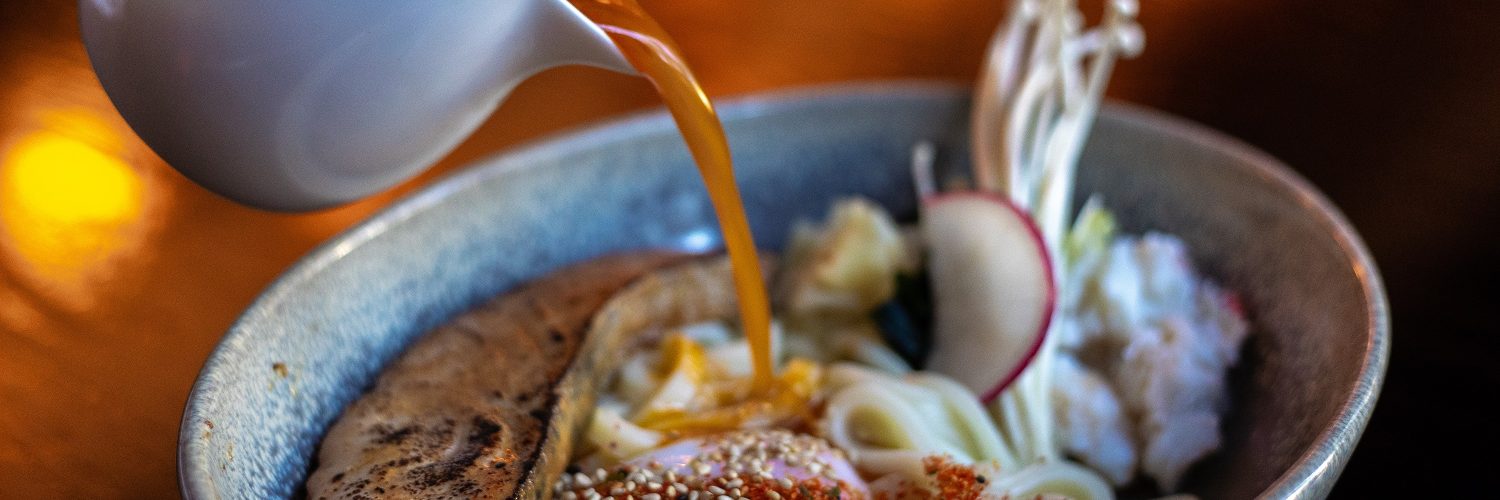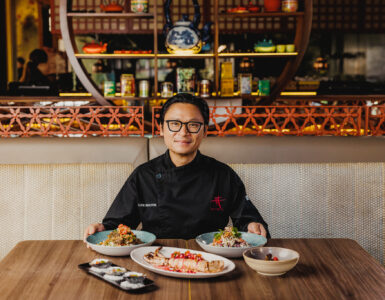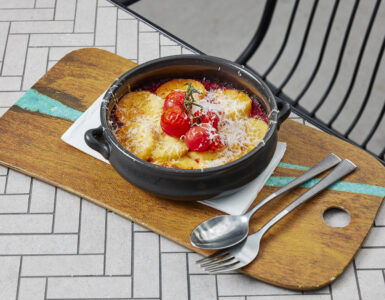The secret to Chase Kojima’s miso soup recipe? Love – and a little extra care in sourcing the right ingredients for a broth rich in flavour.
“Miso soup is more than just a comfort food,” says Executive Chef of Sokyo and Kiyomi at The Star Sydney and Gold Coast, Chase Kojima, who grew up working in the Japanese restaurant his father ran in San Francisco. “It’s part of my lifestyle. I can’t live without miso soup.”
But this seemingly simple soup is anything but, “to make a good miso soup there is no shortcut,” says Chase. Over the many years of working in restaurants, figuring out his signature style and learning from others, Chase has perfected his miso soup recipe.
“The best miso soup to me is what I grew up with: a bit under seasoned, but when you enjoy the whole soup the tastebuds are optimised and it’s just right. I like mine light.”
A Japanese staple
In Japanese, miso means ‘fermented beans’ and is thought to aid in digestion – which is why many Japanese people eat it first thing in the morning. The paste is rich in vitamins B, E and K and folic acid and helps create healthy bacteria in the gut – due to the fermented soybeans.

Mastering miso soup is all about getting the dashi right. Dashi is the broth of the soup and a cornerstone for a lot of Japanese cooking. “My simple method has been passed down for generations,” says Chase. He uses kombu (a type of seaweed) and bonito flakes to add a depth of flavour [exact recipe instructions below].
“Kombu gives out the umami flavour of the sea from the kelp. You can make delicious miso soup without kombu, but it will be either using really expensive and aged bonito flakes or using other protein like pork or chicken stock,” warns Chase.
Chase’s secret
Aspiring miso chefs should note there are no precise measurements to Chase’s miso soup recipe. “It’s how I feel on the day,” he says, “if I feel more tired, I add more miso, if I’m hungry I add more vegetables and tofu.”
For many of us, memories and food are so closely intertwined and will lead us on all sorts of adventures and discoveries to find the perfect (insert your favourite dish here). For Chase, the most memorable experience of eating miso soup was when he dined at Jimbocho Den, in Tokyo.
“Chef Zaiyu Hasegawa’s miso soup was so good I asked him how he makes it. He said, “Kokoro” – which basically means love. But getting to the specifics, he didn’t use kombu. He used a Hon-katsuobushi (bonito flakes) that had been aged for many years, which you can’t get here. But the point is try to get yourself the best ingredients, no shortcuts, and put some love into your soup.”
Chase’s Miso Soup Recipe
Ingredients:
- Kombu
- Bonito flakes (katsuobushi)
- Miso paste
- 4 cups water
Optional additions:
- Tofu
- Aburaage
- Mushrooms
- Spring onions
Method:
- Add water and kombu to a saucepan and heat on the stove until it’s almost at a boil (99°C). Then take out the kombu and wait until the temperature has reduced to around 95°C.
- Add the bonito flakes (Chase recommends adding a lot of these). Keep the broth cooking at a temperature above 85°C. Allow it to brew for 10minutes and then strain out the bonito flakes.
- Add additional ingredients aburaage, mushrooms or spring onions and bring to the boil. Take off heat and add miso paste (note: don’t cook the miso, it’s important that the broth is very hot)
- Add the tofu to the broth. If you’re adding a lot of tofu, have the tofu sitting in hot water in a strainer so it’s easy to pull out and into the soup.
Chase’s key points: “I don’t cook the miso and I don’t cook the tofu. Not a game changer but it’s my own personal style.”






